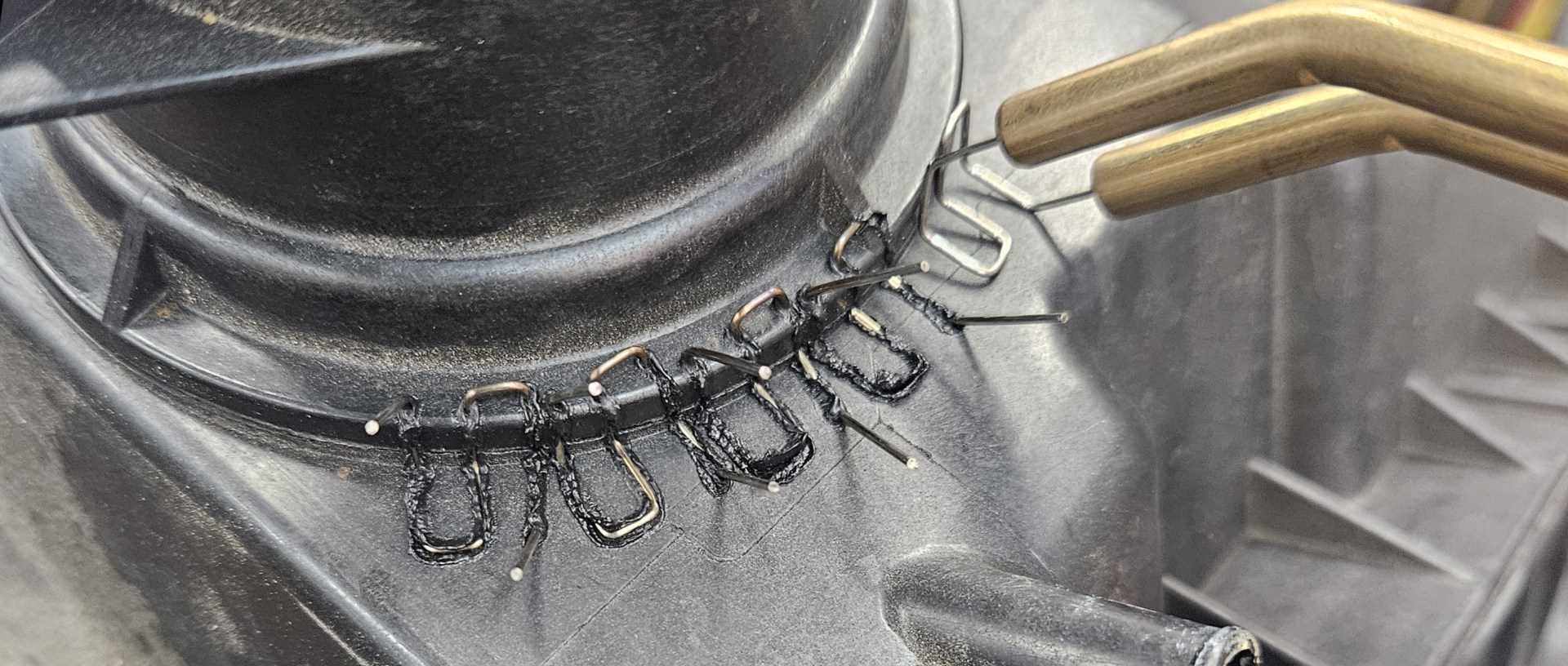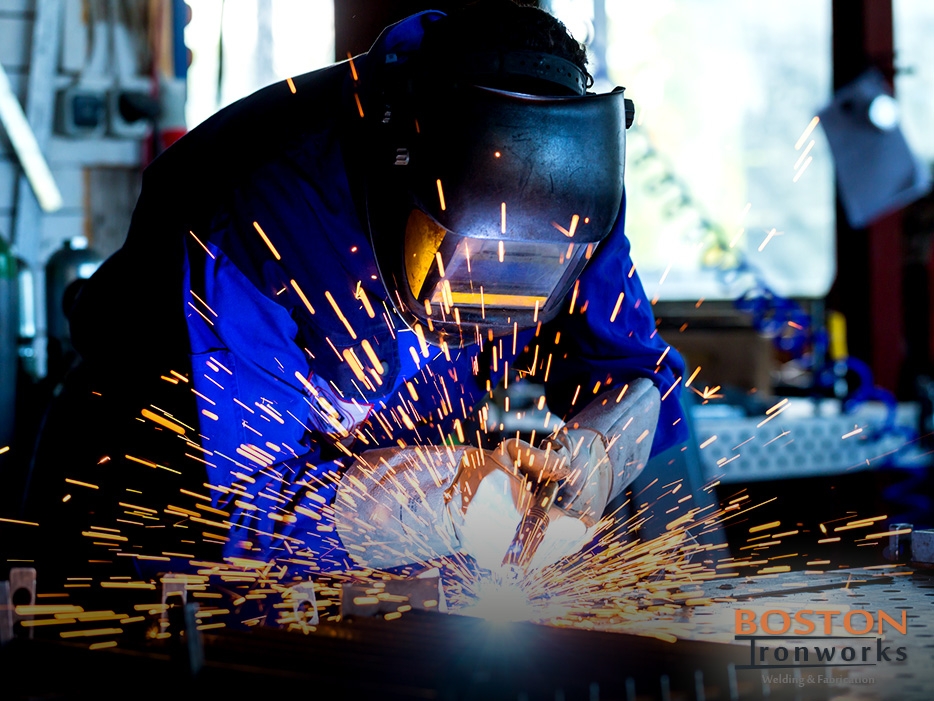Common Welding Repair Work Issues and Just How to Address Them Effectively
Welding repair services frequently come across a variety of problems that can threaten the stability of the last product. Typical problems include poor infiltration, porosity, and misalignment, to name a few. Each defect offers unique obstacles that require specific strategies for resolution. Understanding these problems is vital for welders intending to enhance their abilities and results. This conversation will certainly check out these common welding fixing problems and effective techniques to resolve them.
Insufficient Infiltration
Inadequate infiltration occurs when the weld steel stops working to completely fuse with the base product, resulting in weak joints and prospective structural failings. This issue frequently stems from inadequate heat input, incorrect electrode angle, or incorrect welding speed. Welders might encounter poor infiltration due to a mistake of the needed criteria for a certain material density or kind. Furthermore, contamination on the base material's surface area can impede effective bonding, exacerbating the trouble. To address poor infiltration, welders need to assure ideal settings on their devices and keep a clean work surface area. Normal examination of welds is recommended to determine any kind of deficiencies early, enabling timely improvements and the avoidance of compromised structural stability in bonded settings up.
Porosity
Porosity is a typical problem in welded joints that shows up as small gas bubbles caught within the weld steel. This defect can endanger the honesty of the weld, resulting in lowered toughness and prospective failure under stress and anxiety. Montana Mobile Welding and Repair Belgrade. Porosity commonly arises from contamination, dampness, or improper welding techniques, which allow gases to get away into the liquified weld swimming pool. To deal with porosity, welders must assure correct surface prep work, keep a clean workplace, and use appropriate welding criteria. Additionally, picking the appropriate filler material and shielding gas can alleviate gas entrapment. Normal evaluation and testing of welds can assist recognize porosity early, ensuring prompt corrective activities are taken, thus preserving the top quality and reliability of the bonded framework
Misalignment
Imbalance in welding can emerge from different variables, including improper arrangement and thermal development. Recognizing the origin is crucial for effective resolution. Several adjustment techniques are readily available to straighten components and assure structural honesty.
Reasons for Imbalance
Welding imbalance typically originates from a variety of underlying issues that can endanger structural integrity. One key cause is inappropriate fit-up of elements prior to welding, which can bring about spaces and unequal surface areas. Variants in thermal expansion throughout the welding process can additionally result in distortion, specifically if the materials being signed up with have various coefficients of growth. Furthermore, insufficient fixturing and securing may fail to hold components safely in area, leading to motion throughout welding. Improperly maintained equipment, consisting of welding equipments and tools, might introduce inconsistencies in the weld bead, further adding to misalignment. Operator error, stemming from not enough training or experience, can additionally play a considerable role in creating misaligned welds.

Modification Techniques Available
Resolving misalignment properly needs a mix of restorative methods tailored to the particular problems at hand. One common approach is making use of fixtures or jigs to hold components in the correct setting throughout welding, ensuring regular alignment. Additionally, pre-heating the products can help in reducing distortion and improve fit-up. For considerable misalignment, mechanical realignment strategies, such as utilizing hydraulic jacks or clamps, can be employed to remedy the position before welding. Post-weld warm treatment may additionally be required to eliminate stress and anxieties triggered by misalignment. Mindful examination and change throughout the setup stage can avoid imbalance issues from coming to be significant problems, promoting a smoother welding procedure and enhancing total architectural honesty.
Distortion
Distortion is a common challenge in welding that can develop from various factors, including irregular cooling and heating. Recognizing the root causes of distortion is vital for executing efficient avoidance techniques. Resolving this concern not just boosts structural stability however additionally boosts the total quality of the weld.
Causes of Distortion
When subjected to the extreme warm of welding, products frequently undergo modifications that can lead to distortion. This sensation mostly occurs from thermal development and contraction during the welding process. As the weld location warms up, the material expands; upon air conditioning, it gets, which can create interior anxieties. In enhancement, uneven home heating across a workpiece can aggravate these tensions, resulting in bending or bending. The sort of product likewise plays a substantial function; steels with varying thermal conductivity and coefficients of expansion may respond differently, causing unpredictable distortions. Furthermore, poor joint layout and insufficient fixturing can contribute to misalignment throughout welding, increasing the probability of distortion. Comprehending these reasons is crucial for effective welding fixing and avoidance strategies.
Prevention Techniques
Efficient avoidance strategies for distortion during welding concentrate on regulating heat input and ensuring appropriate joint design. Keeping a constant warm input helps to lessen thermal expansion and contraction, which can lead to check over here distortion. Using methods such as pre-heating the work surface can additionally minimize the temperature level gradient, advertising uniform heating. In addition, picking suitable joint layouts, such as T-joints or lap joints, can improve security and lower tension concentrations. Carrying out proper fixturing to safeguard the workpieces in location even more help in maintaining alignment throughout the welding process. Finally, staggered welding sequences can disperse heat more evenly, avoiding local distortion. By applying these methods, welders can significantly lower the probability of distortion and boost the overall top quality of their welds.
Cracking
Fracturing is an usual issue experienced in welding fixings, commonly arising from various aspects such as inappropriate cooling rates, product selection, or poor joint prep work. The incident of cracks can considerably compromise the integrity of the weld, resulting in prospective failures throughout procedure. To resolve this concern, welders need to initially evaluate the root creates, making certain that materials work and suitably chosen for the details application. Additionally, controlling the air conditioning price throughout the welding procedure is important; fast cooling can cause anxiety and result in cracking. Appropriate joint layout and preparation additionally add to lessening the threat. Executing these strategies can boost weld top quality and durability, inevitably reducing the chance of fracturing in finished weldments.

Insufficient Fusion
A considerable problem in welding repair work is incomplete blend, which occurs when the weld metal does not effectively bond with the base material or previous weld passes - Montana Mobile Welding and Repair Belgrade Welding. This defect can result in weaknesses in the joint, possibly jeopardizing the integrity of the welded framework. Factors adding to incomplete combination include inadequate warmth input, incorrect welding method, and contamination of the surfaces being signed up with. To address this concern efficiently, welders should assure correct pre-weld cleaning and surface prep work, in addition to adjust their welding criteria to attain sufficient infiltration and blend. Routine evaluation during the welding why not find out more procedure can also assist recognize incomplete blend early, permitting prompt corrective procedures to enhance the overall quality of the weld
Overheating
While welding repair work can enhance architectural integrity, overheating presents a substantial obstacle that can lead to material degradation. Excessive warmth during welding can modify the mechanical residential properties of steels, leading to reduced stamina, raised brittleness, and warping. This phenomenon is especially critical in high-stress applications where architectural reliability is vital. Determining getting too hot can entail visual inspections for discoloration or distortion, along with monitoring temperature level during the welding procedure. To mitigate the dangers connected with overheating, welders should use suitable techniques, such as regulating warmth input, readjusting traveling speed, and using appropriate filler products. In addition, implementing pre- and post-weld warm treatments can aid check out this site recover product buildings and enhance the general top quality of the repair, making certain lasting efficiency and security.
Frequently Asked Inquiries
What Are the Typical Indicators of a Welding Issue?

How Can I Check My Welds for Quality?
To evaluate welds for top quality, one can make use of visual inspections, ultrasonic testing, and radiographic methods. Each strategy assures structural honesty, determines problems, and confirms adherence to defined requirements, ultimately improving the reliability of the welded joints.
What Safety and security Preventative Measures Should I Take While Welding?
When welding, one should focus on security by using suitable individual protective devices, making certain proper ventilation, protecting combustible materials away, keeping a tidy work area, and being conscious of environments to stop mishaps and injuries.
Can I Repair a Weld Without Renovating the Entire Joint?
Repairing a weld without renovating the whole joint is possible, depending on the damages (Montana Mobile Welding and Repair Belgrade Welding). Techniques such as grinding, adding filler material, or utilizing a welding procedure can efficiently deal with details flaws while maintaining the surrounding structure
What Equipment Are Essential for Reliable Welding Services?
Necessary devices for effective welding fixings consist of a welding device, cord brush, grinder, safety gear, clamps, and filler products. Each tool plays an important function in ensuring quality and security throughout the fixing process. Porosity generally arises from contamination, dampness, or improper welding strategies, which permit gases to leave right into the liquified weld pool. Inadequately maintained equipment, including welding devices and devices, might present disparities in the weld grain, more contributing to misalignment. When subjected to the extreme warmth of welding, materials frequently go through adjustments that can lead to distortion. Breaking is an usual issue encountered in welding fixings, commonly resulting from numerous variables such as inappropriate air conditioning prices, product choice, or insufficient joint prep work. A considerable issue in welding repair services is insufficient combination, which takes place when the weld steel does not appropriately bond with the base material or previous weld passes.